|
1928 Vintage Crush 10,427 Tons
Friday March 16th 1928
Wine Bounty Reduction
Industry leaders had roundly condemned the reduction and would mean that the landed cost of duty paid wines from Australia would be above the British, Portuguese and Spanish wines. At Berri a meeting of 156 growers unanimously carried a resolution of strong protest against the proposed reduction. A deputation consisting of Messrs W. Gursansky (president of the Grape Growers' Association), S. W. Coombe (Renmark Growers' Distillery) and H. W. Dalziel (Berri Cooperative Distillery) went to Canberra to complain.
Friday April 20th 1928
What has the Bounty cost? A speech by a Mr. Parsons in the House of Representatives supporting the 4/- per gallon has cost some £300,000 odd and had saved thousands of returned soldiers from ruin and the government the millions of pounds spent placing the growers on the land.
Friday October 12th 1928
At end of 1928 stocks of fortifying spirit there was 500,000 proof gallons in store.
1929 Vintage Crush 19,712 Tons
Friday March 1st 1929
The Pioneer reported that The Wine Overseas Marketing Bill was introduced in the House Of Representatives. The Bill provides for the establishment of an overseas marketing board and would comprise of one member with commercial experience ,appointed by the Governor-General, two representatives elected by the cooperative wineries and distilleries in New South Wales and Queensland, one elected to represent similar interests in Victoria and, further, two to represent similar interests in South Australia and Western Australia.
The Government representative will hold office indefinitely, while the elected members will hold office for two years. This move was to counter the problems associated with comparative costs and practices of our competitors and to assist Australian winemakers to achieve sale of wine in Great Britain. |
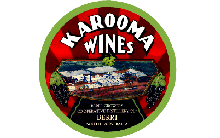 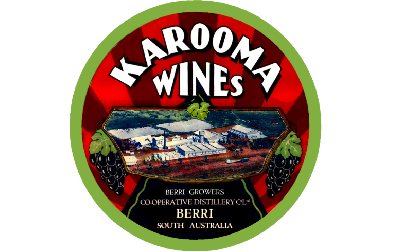
|
Butt Reece loaned me a barrel end sticker which I photographed with my digital camera and believe the above aerial shot was taken in either 1929 or 1930. I have been unsuccessful in finding the source of the photo which could be in the archives at Berri Estates. The Karoom railway siding is in the foreground and the railway from Renmark to Barmera was opened on the 1st August 1928 and the now Sturt Highway was unsealed. |
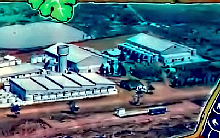 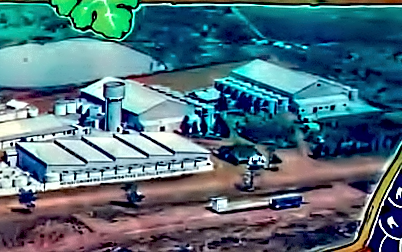
|
This is the west end of the premises and from the left mid-ground are the roadside tanks with No.1 Ferment Cellar behind, then the Water tower, then the building housing the 66 Block 3 5,300 gallon tanks and the lean-to section in front over the underground 2,000 gallon tanks 801-12 and behind that the western "Lily" pond. In the middle is the General Office and then on western side of Block 3 are the 16 Block 4 20,000 gallon tanks 601-616. Next on the right you can see the Manager's residence and on the other side of that are Block 4 20,000 gallon tanks 617-632. Then next right is the Block 5 building housing 66 5,000 gallon tanks and underground 2,000 gallon tanks 813-24 under the lean-to section. On the far right are the Block 6 20,000 gallon tanks 601-616. |
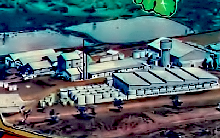 
|
In the foreground from the left is No.2 Ferment Cellar, Block 1 20,000 gallon tanks, roadside Block1 20,000 gallon tanks 101-112 with No.1 Ferment Cellar behind. Mid picture from the left is the Bond Store, then Still House and Boiler room and to the right of the chimney stacks is No.3 Ferment Cellar with Wine Charger 20,000 gallon tanks No.s 6-9 behind and to the rear right of these is the Power House. On the extreme right are Block 2 20,000 gallon tanks 201-205, the Water Tower and the Block 3 building. Top of picture are the two large "Lily" ponds. |
During this
year increased concrete storage tanks were built which was the start
of the Block 5 5,000 gallon tanks. Also a further two Bond stores
were constructed and additional galvanised spirit tanks were installed.
With regard to the Bond Store I believe this then consisted of the
original two story structure with the next extension to the east
and then two further full width bays to the south.
Friday April 29th 1929
The Australian Wine Industry Sale of 1928 Vintage. It's suggested in an article that the 1928 wine make had been sold to a London purchaser at a satisfactory price. A comment about the first shipment to be dispatched this weekend which could be a part of a sale of 60,000 gallons.
Friday September 6th 1929
Letter to the Editor from H. J. Brownett of Winkie, August 10th.
Concerns expressed in Mr. Brownett's letter, were the intake of unripened fruit, closures due to lack of processing capacity, disparity with "Home Baume" test and the "Crusher" test, late supply of galvanised tanks to transport the late harvest grapes to the winery (the normal cart, wagon etc on the rough roads would lose many gallons of juice over the travel district average of 15-20 kms. Also he felt that the Board and Management should have signalled to the shareholders the problems with intake and storage capacity. This had been impressed on him from statements made by the Premier Mr. Butler and Mr. Tyrell, late bank manager of the Waikerie branch of the Bank of Adelaide, who both expressed the lack of business ability of those in charge of co-operative concerns all along the river. Mr. Brownett suggested the appointment of a general manager of thorough commercial and business training and repute.
I believe this was finally achieved with the appointment of Mr. B. J. Hill in 1977.
Friday November 1st 1929
The Premier, the Honourable R. I. Butler, secured standing orders in the Assembly to move that the Government be empowered to make an advance of a loan not exceeding £100,000 to the Berri Growers Distillery Company for the year 1929-30. The problem arose with the stocks of spirit, a volume of 300,00 gallons (not known if this was proof or liquid gallons). His recommendation was to hold this spirit until it matured and then could be sold at a profit. His stand was to support the primary industries and the thousands of returned men that been settled on the irrigation lands and were under big liabilities to the Government. The debate was adjourned.
Friday November 8th 1929
After much debating the State Government agreed to advance £50,000, despite some adverse comments by various members of Parliament. Friday November 15th 1929, page 547 By now the Industry was producing some 17,000,000 gallons of wine. Approximately 9,000,000 gallons of beverage wine are made and 8,000,000 gallons are distilled. Current consumption is 5,000,000 gallons per annum leaving 4,000,000 gallons as surplus. This brought the focus on the existing regulations that did not allow the consumption of wine with meals. This was the start to encourage the populace to learn and appreciate the material benefits of wine drank in moderation. |











